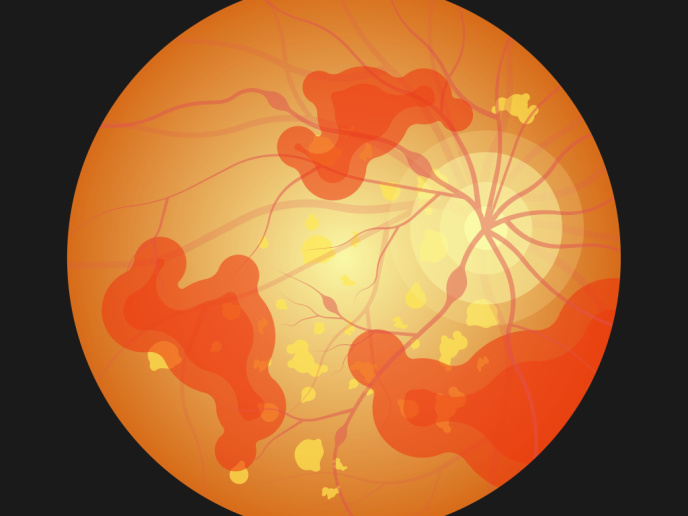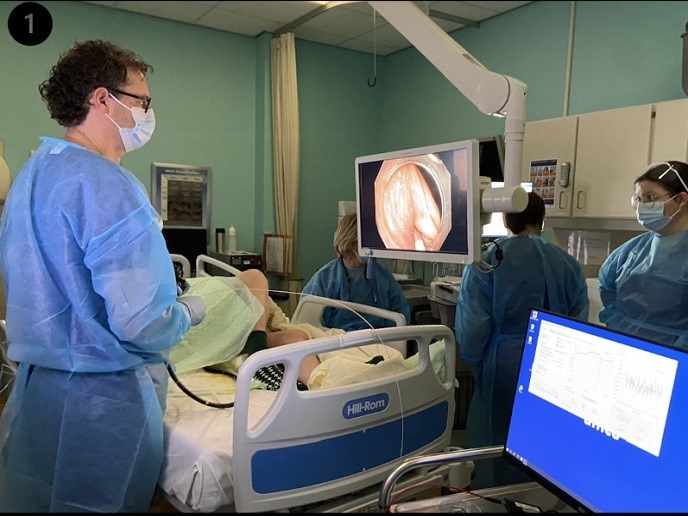AI diagnosis of diabetic retinopathy
Diabetic Retinopathy(opens in new window) is a common complication of diabetes, associated with damaged blood vessels in the retina. If left untreated, diabetic retinopathy may progressively lead to vision deterioration and blindness. Diagnosis is performed through comprehensive periodic eye and vision examination. Overall, diabetic retinopathy requires expert personnel for grading, which is laborious and prone to human error.
Automated grading of diabetic retinopathy
The EU-funded RETINAL project developed an innovative device that takes fundus(opens in new window) images, and combined with intelligent software, performs automated grading of diabetic retinopathy. The U-RETINAL DFC device is a portable and easy-to-use colour fundus digital camera that allows the high-resolution analysis of retinal alterations. The automatic focus and capture functions make the U-RETINAL DFC device operable by non-specialised staff. Moreover, these functions in combination with embedded quality check system ensures good quality images for subsequent disease grading. The camera has a built-in Wi-Fi module offering the potential for wireless transfer of the images to a platform where they are evaluated by specialised personnel. AI supports the diagnosis by professionals and creates a clinical report which is made available to both clinician and patient. The U-RETINAL DR solution exhibits 96 % sensitivity and 95 % specificity, offering a reliable diagnostic tool for diabetic retinopathy. “The most significant goal of the project has been to evolve from an initial idea of a prototype to a clinically validated and certified marketable medical device,” outlines Jurgi Ugarte, project coordinator and CTO at ULMA Medical Technologies(opens in new window).
Improved patient compliance, more examinations, better outcomes
The prevalence of diabetes has increased markedly due to population ageing and lifestyle changes and may lead to complications. Vision loss from diabetic retinopathy can be avoided in 90 % of cases, with proper management and treatment. The latter usually involves laser surgery or the injection of medications into the eye to decrease inflammation or stop the formation of new blood vessels. Although frequent eye examinations contribute to prompt diagnosis, patient compliance is poor. The U-RETINAL DR solution addresses this problem. As a non-midryatic fundus camera, it eliminates concerns over the potentially adverse effects of pharmacological drops needed for eye examinations and will therefore ensure better patient compliance. “U-RETINAL DR solution is designed specifically for primary care centres to address and strengthen the early detection and timely treatment of diabetic retinopathy, through regular fundus examinations of diabetes patients,” emphasises Ugarte. Introduction of the U-RETINAL DFC device and ICT tool into routine medical practice will advance existing screening programmes for diabetic retinopathy and reduce associated healthcare costs. Given the global prevalence of diabetes, the prompt identification of diabetic retinopathy will assist treatment and improve the lives of millions of people worldwide.
Other ophthalmic examinations to benefit, too
ULMA´s ambition goes a step further from diabetic retinopathy: it aims to change the current paradigms of clinical practice through the development and introduction into the market of cutting-edge and non-invasive AI-based tools. These will be used for the early detection and clinical follow-up of ophthalmic diseases such as age-related macular degeneration and glaucoma.







